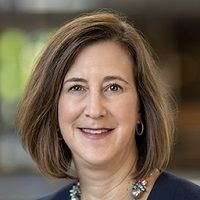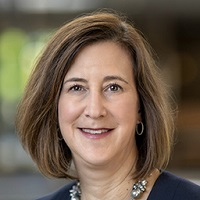SECURE 2.0 Act Now Helps Lighten the Burden of Student Loans
Employers can attract talented employees with a new benefit: a matching contribution to an employee's 401(k) when they make payments on their student debt.


Across the country, employers are competing fiercely for talent. According to recent data from the U.S. Chamber of Commerce, more than 34 million workers quit their jobs in 2023. Young people, in particular, are switching companies — or careers — if it means a higher paycheck or better hours.
Employers worried about recruiting and retaining employees have a new tool at their disposal, thanks to a federal law that went into effect at the start of the year. As of January 1, the SECURE 2.0 Act permits employers to "match" any payments their employees make toward their student loan balances with tax-advantaged contributions to their retirement accounts.
Employers should take advantage. Doing so can allow them to make a difference in their employees' financial security now and in the future. And that can make them an attractive destination for talent.
From just $107.88 $24.99 for Kiplinger Personal Finance
Become a smarter, better informed investor. Subscribe from just $107.88 $24.99, plus get up to 4 Special Issues

Sign up for Kiplinger’s Free Newsletters
Profit and prosper with the best of expert advice on investing, taxes, retirement, personal finance and more - straight to your e-mail.
Profit and prosper with the best of expert advice - straight to your e-mail.
Student loan debt load is heavy
Student debt is a millstone for American workers. The nation's collective student debt load is roughly $1.73 trillion, according to the Federal Reserve. On average, borrowers pay between $200 and $299 monthly toward student loans.
That debt burden weighs on their mental and financial health.
A recent survey from Morning Consult found that more than nine in 10 young adults who continued with education after high school faced stress over money and finances that affected their physical and mental wellness. Of that group, 86% said student loans were a contributor to that stress.
Nearly half said student debt impacted the amount of money they contributed to their 401(k)s. Of that group, more than four in 10 said student loan debt caused them to withdraw money from their retirement accounts.
Those kinds of decisions can have severe long-term consequences. Just $10,000 contributed at age 25 grows into more than $100,000 by age 65, assuming a 6% annual return. Waiting until age 35 to set aside that money drives the total return at age 65 to just $57,000.
Young workers are looking for employers who can help them overcome that math. According to the Morning Consult survey, seven in 10 said they were very interested in a workplace benefits plan that offered contributions to a 401(k) if an employee made payments on their student loans.
That's more than the share who said they were very interested in hybrid work, paid family or parental leave or help with childcare costs.
Further, over half of those surveyed indicated that a 401(k) contribution for student debt repayment would have a "significant impact on their decision if choosing between multiple job offers."
What young adults are looking for
In other words, the new benefits authorized by SECURE 2.0 are exactly what young adults are looking for. Rarely do businesses have the chance to simultaneously tackle a pressing societal problem and expand their pool of talent.
There's already real-world evidence demonstrating how effective these programs can be. As of 2021, nearly one in five U.S. companies — including Google and Hulu — offered some form of student loan assistance to employees. This assistance includes enabling employees to cash in unused vacation time and apply it to their student loans and giving employees with school debt money to put toward their loans.
Abbott implemented a first-of-its-kind program in 2018 when we launched Freedom 2 Save with special dispensation from the IRS. This program inspired the student loan provision of SECURE 2.0.
Under Freedom 2 Save, employees who apply at least 2% of their salary toward paying down their student loans receive a 5% company contribution into their 401(k) annually. Over 2,800 Abbott employees have enrolled and received more than $7 million in total contributions to their 401(k)s.
Paying down significant amounts of student debt
Employees who participate in the program overwhelmingly say it makes them feel that we care about them as people, not just workers. Some have paid down as much as $60,000 in debt in just a few years.
The program also aids a diverse set of graduates, with over one-third of enrollees using it to pay off loans from a non-bachelor's degree.
Our experience can serve as a blueprint for companies planning on taking advantage of the flexibility offered by SECURE 2.0.
Student debt relief initiatives can aid not just workers but employers, too. They should resolve to make them part of their recruitment and retention strategy this year.
Related Content
- 529s: No Longer the Ho-Hum Investing Device for College
- Four Options for Saving for Your Newborn’s Future
- Three Reasons You Need to Use a 529 Plan (and Two Reasons You Don't)
- Biden Cancels $1.2 Billion in Student Loan Debt: What to Know
- Student Loan Borrowers to See Better Protections Under New Rules
Profit and prosper with the best of Kiplinger's advice on investing, taxes, retirement, personal finance and much more. Delivered daily. Enter your email in the box and click Sign Me Up.

Mary Moreland is Executive Vice President, Human Resources at Abbott. Prior to assuming this role in August 2019, she served as Divisional Vice President, Compensation and Benefits. She joined Abbott in 2011 as Divisional Vice President, Global Retirement Programs and Human Resources Mergers and Acquisitions. Mary advocates on behalf of Abbott employees around the world — from those on the manufacturing lines to scientists working on the company’s breakthrough inventions.
-
 Samsung Galaxy S25 Ultra for $4.99 a Month: A Closer Look at Verizon’s Deal
Samsung Galaxy S25 Ultra for $4.99 a Month: A Closer Look at Verizon’s DealVerizon’s aggressive pricing makes Samsung’s top-tier phone tempting, but the real cost depends on your plan and how long you stay.
-
 I'm 59 with $1.7 million saved and lost my job. Should I retire?
I'm 59 with $1.7 million saved and lost my job. Should I retire?We asked professional wealth planners for advice.
-
 4 Times to Say Yes to a Roth Conversion and 4 Times to Say No
4 Times to Say Yes to a Roth Conversion and 4 Times to Say NoRoth conversions should never be done on a whim — they're a product of careful timing and long-term tax considerations. So how can you tell whether to go ahead?
-
 A Wealth Adviser Explains: 4 Times I'd Give the Green Light for a Roth Conversion (and 4 Times I'd Say It's a No-Go)
A Wealth Adviser Explains: 4 Times I'd Give the Green Light for a Roth Conversion (and 4 Times I'd Say It's a No-Go)Roth conversions should never be done on a whim — they're a product of careful timing and long-term tax considerations. So how can you tell whether to go ahead?
-
 A 4-Step Anxiety-Reducing Retirement Road Map, From a Financial Adviser
A 4-Step Anxiety-Reducing Retirement Road Map, From a Financial AdviserThis helpful process covers everything from assessing your current finances and risks to implementing and managing your personalized retirement income plan.
-
 The $183,000 RMD Shock: Why Roth Conversions in Your 70s Can Be Risky
The $183,000 RMD Shock: Why Roth Conversions in Your 70s Can Be RiskyConverting retirement funds to a Roth is a smart strategy for many, but the older you are, the less time you have to recover the tax bite from the conversion.
-
 A Financial Pro Breaks Retirement Planning Into 5 Manageable Pieces
A Financial Pro Breaks Retirement Planning Into 5 Manageable PiecesThis retirement plan focuses on five key areas — income generation, tax management, asset withdrawals, planning for big expenses and health care, and legacy.
-
 4 Financial To-Dos to Finish 2025 Strong and Start 2026 on Solid Ground
4 Financial To-Dos to Finish 2025 Strong and Start 2026 on Solid GroundDon't overlook these important year-end check-ins. Missed opportunities and avoidable mistakes could end up costing you if you're not paying attention.
-
 Are You Putting Yourself Last? The Cost Could Be Your Retirement Security
Are You Putting Yourself Last? The Cost Could Be Your Retirement SecurityIf you're part of the sandwich generation, it's critical that you don't let the needs of your aging parents come at the expense of your future.
-
 I'm an Insurance Pro: It's Time to Prepare for Natural Disasters Like They Could Happen to You
I'm an Insurance Pro: It's Time to Prepare for Natural Disasters Like They Could Happen to YouYou can no longer have the mindset that "that won't happen here." Because it absolutely could. As we head into 2026, consider making a disaster plan.
-
 The Future of Philanthropy Is Female: How Women Will Lead a New Era in Charitable Giving
The Future of Philanthropy Is Female: How Women Will Lead a New Era in Charitable GivingWomen will soon be in charge of trillions in charitable capital, through divorce, inheritance and their own investments. Here's how to use your share for good.